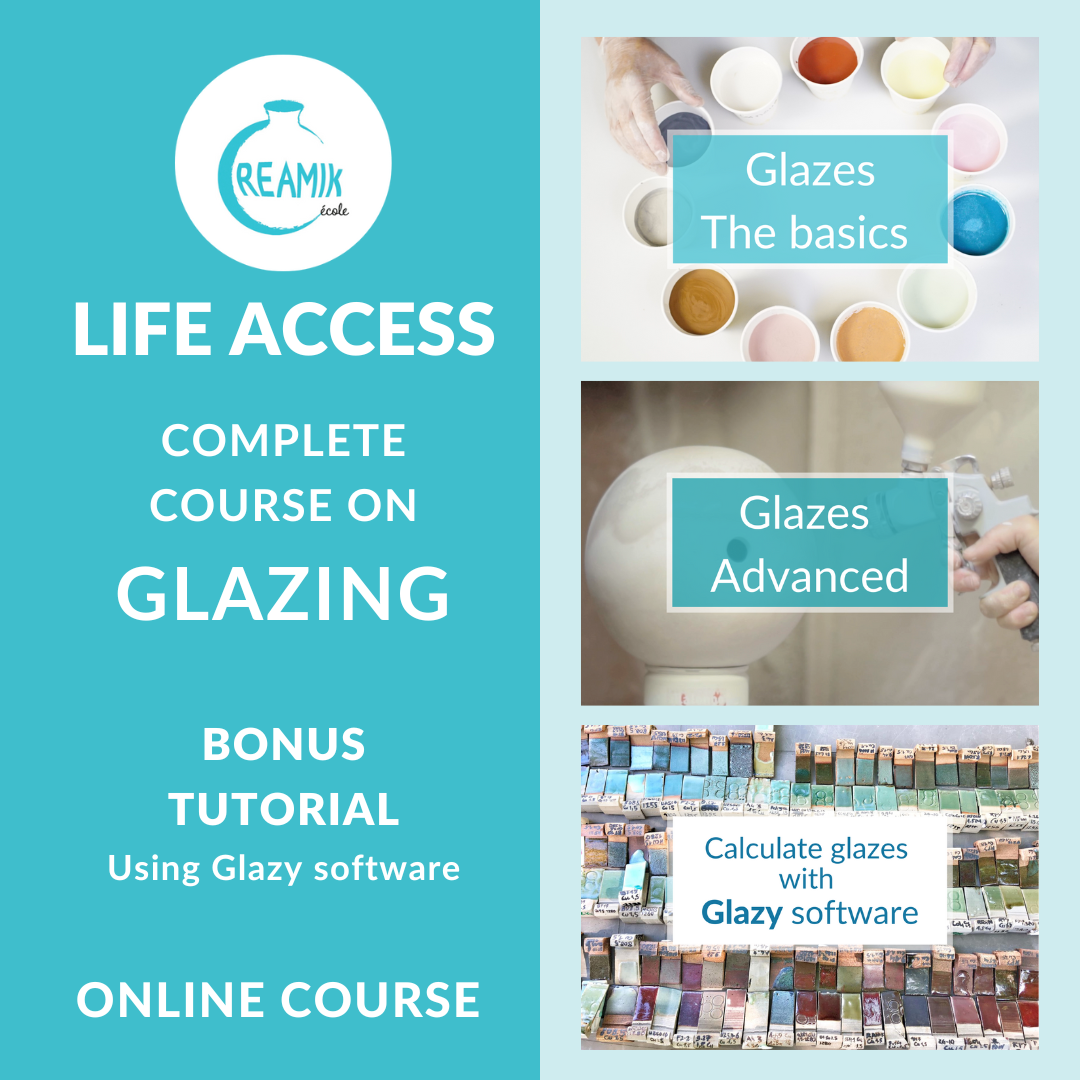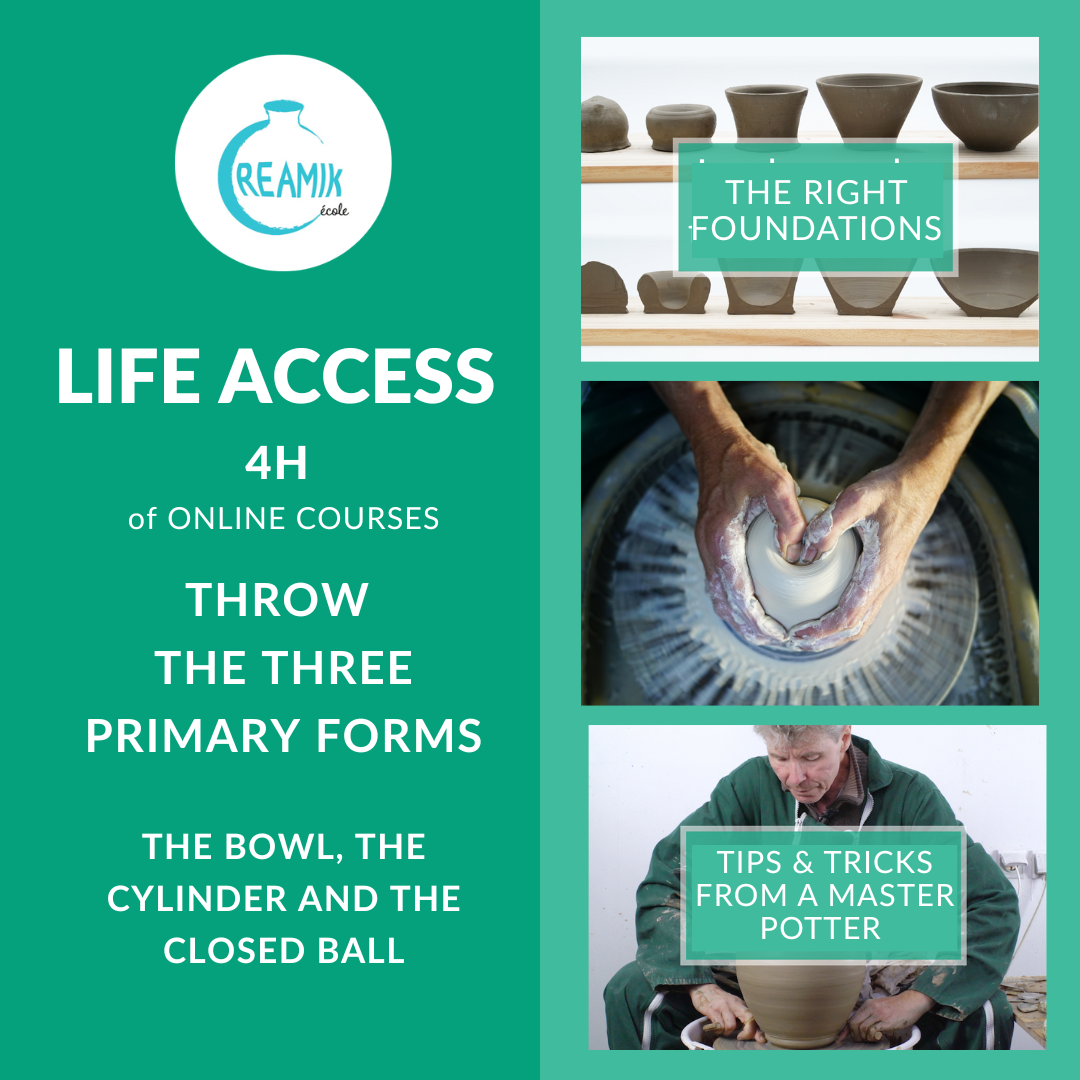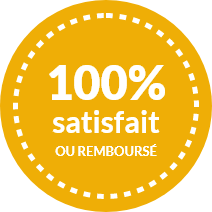BACK TO SCHOOL Promotions : UP to 50% OFF!
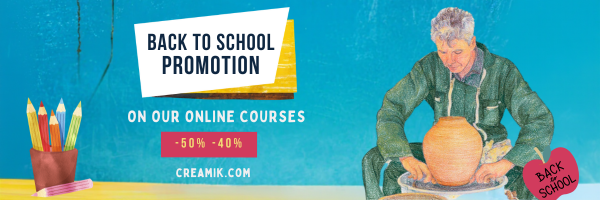
When you’re a potter, you’re forever a student of Mother Earth.
Embrace the Back-to-school energy by opening the perfect bundle of new resources:
THE GOLDEN TICKET
Already have some of our courses?
Then have a look at our other options:
Then have a look at our other options:

The Expert Pack
Two incredible resources for Potters at every stage of their journey:
- The Technical Drawing guide will show you how to Plan out your creative designs, how to visually communicate effectively to establish your style and create incredible consistent series.
- The Defects map will enable you to trace the source of any defect in your work and understand how to improve the process, based on 45 years of research by Matthieu Lievois, pottery master and Ceramic school founder.
$147
$73
Or… Buy a course on it’s own :

Defects map
- Understand the cause of any imperfection in your work and how to alter the course of production to avoid them.
- From micro cracks to warping, anticipate any mishap and improve your work as you go.
- Access an extensive library of visual flaws to identify the source of any unwanted outcome you are facing.
- Lifetime access to the 41 pages of potential defects and their solutions brought together by Master Potter and school founder Matthieu Lievois.
$97
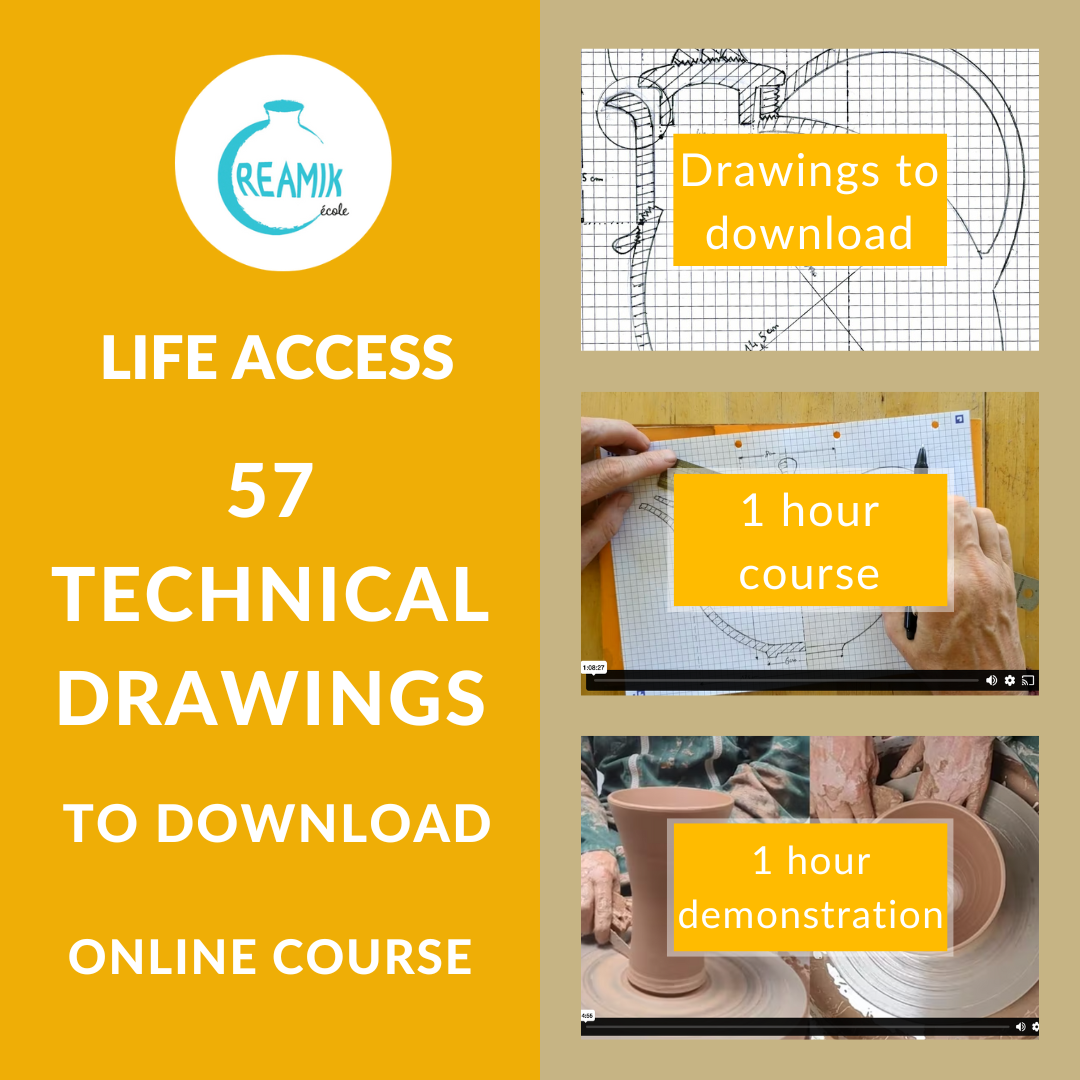
57 Technical Drawings
- Boost your creativity with 57 unique and original shape drawings, created by Matthieu specifically for this course
- Learn to anticipate the difficulties of the throw, it helps you to think ahead through all the steps of the throw and the cut
- Follow Matthieu’s detailed explanations on creating a technical drawing, with the example of a teapot, to learn how to create your own shapes and designs
$50
The steps to obtain your online courses:
FAQs


